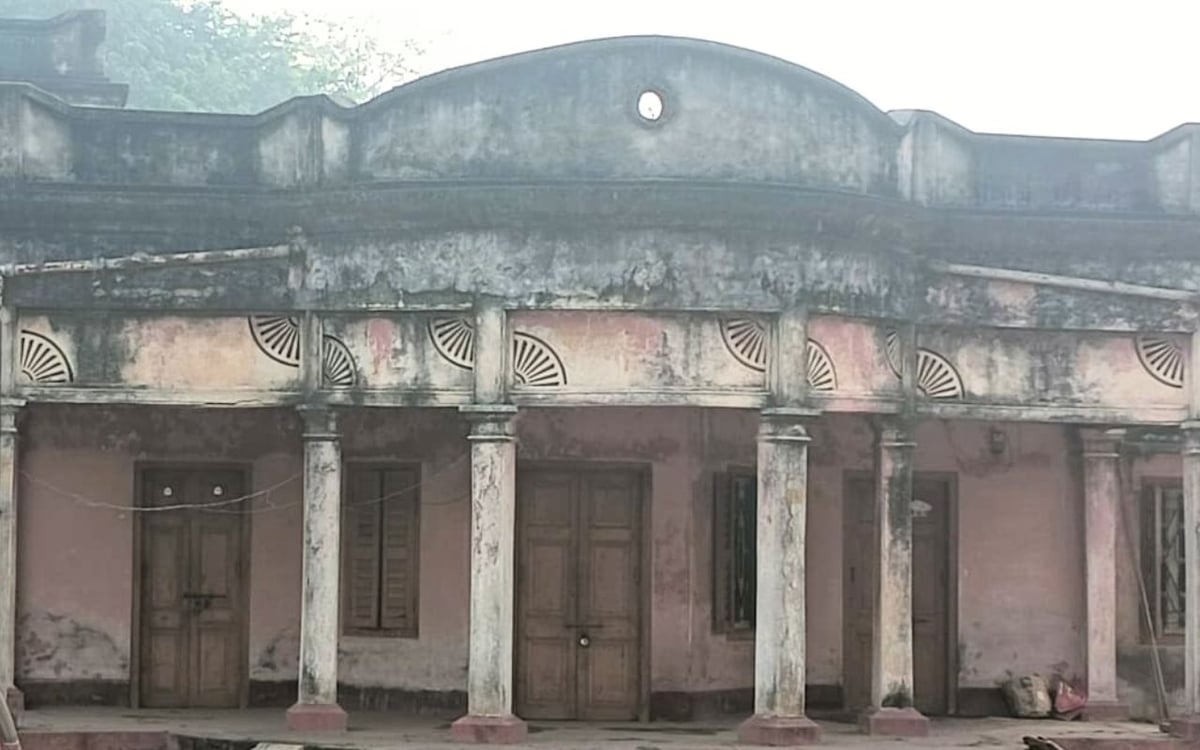Sariya, the commercial market of Giridih district, was once famous for its golden past. Many elite Bengali families had made their home here. Their palaces still bear testimony to their glorious past. It was recognized as a peaceful and naturally beautiful place in the then Bihar. The gardens here were fragrant with flowers. The atmosphere of Sariya used to be fragrant with the sweet fragrance of flowers. Today the golden past of Sariya is becoming tarnished. Many cells have ceased to exist. The land mafia is keeping an eye on those who are left. read carefully Lakshminarayan Pandey Report of.

Bengali Kothis had given a separate identity to Sariya
Sariya, famous as the city of Bengali huts, had its own identity in the state. Today, except a few kothis, most of them have ceased to exist. Before independence, Sariya (Hazaribagh Road) was quite busy with Bengali houses and Bengali community. People from many elite families and high-ranking personalities of Bengal lived here. At that time, the sweet fragrance emanating from the colorful flower beds in the huts here used to attract people. The garden had colorful flowers and different types of fruits, which are not seen in any other area of Jharkhand.
250 attractive chambers were built
About 250 huts were built in Chandramarani, Dakbungla Road, Balidih, Sariya-Rajdhanwar main road, Thakurbari Tola, Nawadih Chowk, Bagodih Mod, Netaji Park Marg, Rai Talab Road, Kishori Palli, Pokhriyadih etc. located at Hazaribagh Road Railway Station. These chambers were very grand, beautiful, attractive and huge. Elders say that in those days, colorful electric lights were installed in these chambers, the light of which illuminated the area. A kothi was established on more or less three-four acres of land. There was a big gate to enter the chambers, while there was a small gate next to it.
Hundreds of Bengali families lived there
There was a solid boundary wall around the huts, where hundreds of Bengali families lived. The houses of the local people were made of mud in those days. People of rural areas used to reach Sariya from far and wide to see these huts. The grandeur and beauty of Sariya city gave it its own identity in the integrated Hazaribagh district. Despite the Bengali community having its own linguistic diversity (Bangla), there was a lot of interaction with the people here. Most of the Bengali kothis were built between 1920 and 1970.
Kolkata used to export flowers
There were so many colorful flowers from the gardens of Bengali mansions like marigold, rose, juhi, champa, ratrani, jasmine, sunflower, zinnia, Aparajita Parijat etc. that about five-six quintals of flowers were sent by train to Kolkata every day. From this it can be easily guessed what the condition of these cells would have been like in those days. Many fruit trees and medicinal plants were also planted in the chambers, which were probably not seen anywhere else in the vicinity. In these chambers there were fruit trees like mango, tamarind, sapota, litchi, coconut, lemon, orange, wood apple, custard apple, jamun, gulab jamun etc. Many medicinal plants like Tulsi, Aloe Vera, Parijat, Chironta etc. were also planted.

Many big personalities had built mansions
Many big personalities of Bengal had their mansions in Sariya. ‘Vasushree’ Kothi of the first Speaker of the West Bengal Legislative Assembly Keshav Chandra Bose, Prabhati Kothi of the great freedom fighter Netaji Subhash Chandra Bose, Indian Service General Officer, sixth Army Chief, Shantikunj Kothi of Padma Shri Jayanto Nath Choudhary, the ninth High Commissioner of India to Canada, Dalmia Ki’s Kothi, The Down Kothi of the second Chief Minister of West Bengal and freedom fighter Dr. Vidhan Chandra Roy, national poet, renowned literary writer Bimalkar, poet Nazrul Islam, one of the great poets of Bengali literature, Anirudh Islam, umbrella maker KC Pal’s Kothi, Minister’s family. K Kumar Ashram, Bihari Bhawan of Jyotish Chandra Ghosh, a senior officer in the West Bengal Corporation, in those days, Hari Mohan Sanyal, a big contractor of the former Railways, used to have his quarters here.

